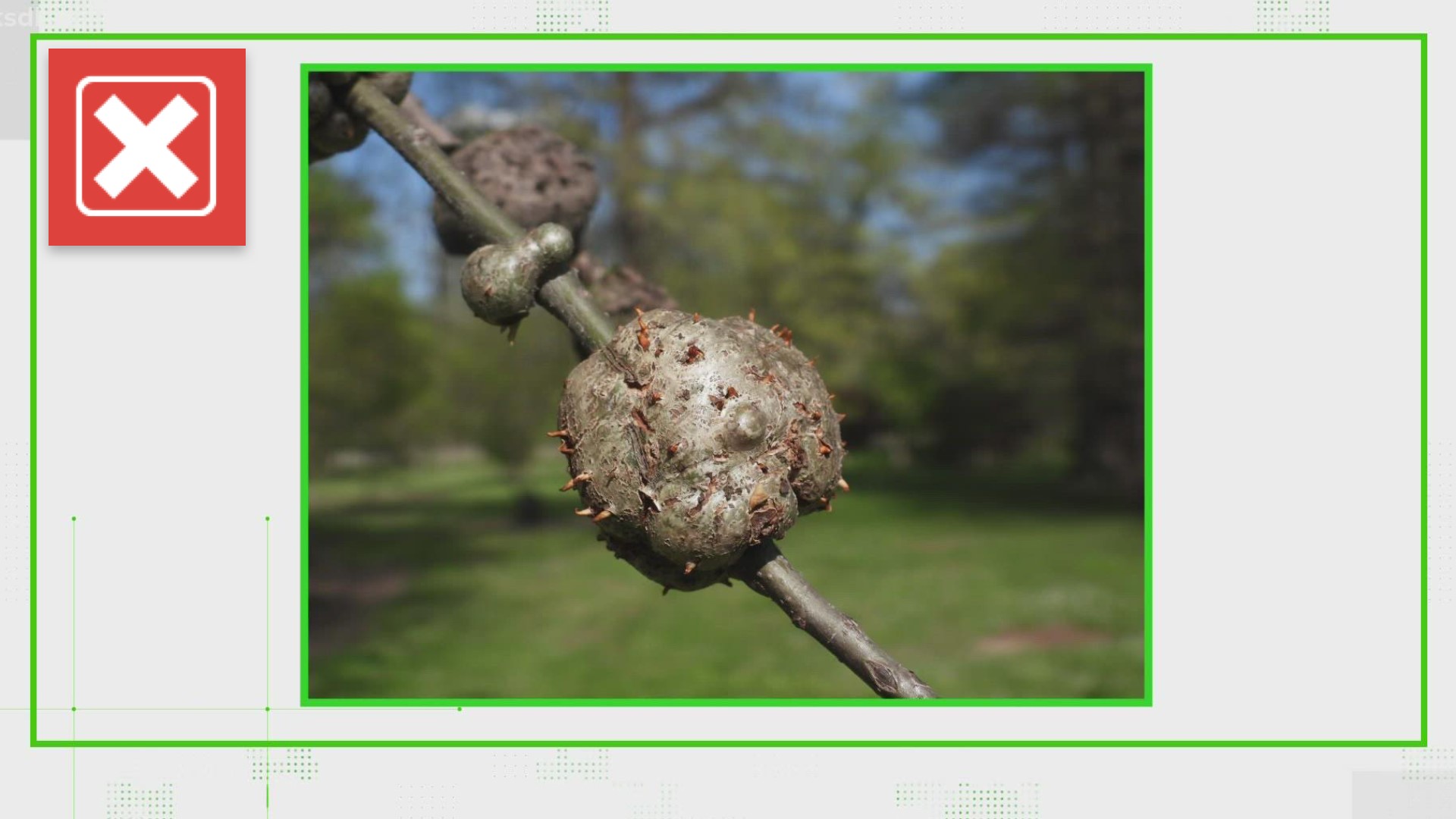ST. LOUIS — The next time you're outside in your neighborhood, look up. Among the branches of oak trees across Missouri, people are noticing more growths than before.
They're called galls, and they're created by insects like wasps to house and feed their offspring. On an oak tree, some wasps produce very large galls, including gouty and horned ones.
Some St. Louis residents have noticed more than usual and are wondering whether the galls can hurt their trees or if there's any way to cure a tree of the unsightly growths.
THE QUESTION
Is it true that concerned homeowners can treat galls on their oak trees?
THE SOURCES
Daniel Moncheski, community forester for the Missouri Department of Conservation
Daria McKelvey from the Missouri Botanical Garden
THE ANSWER
Experts say that there is no proven treatment to eradicate oak galls or the wasps that make them.
WHAT WE FOUND
The wasps that commonly make oak galls around Missouri are a native pest. They're a stingless insect that lays its egg on the tree. The coating of the tree causes a mutated growth, which is the gall. It's all material created by the tree, like a tumor.
Moncheski told 5 On Your Side that St. Louis is seeing "a high influx of affected trees this year, higher than we've seen in recent times."
The wasps love pin oaks, and St. Louis has tons of them. That type of tree was widely planted in our region in the 1950s and '60s. Many of the pin oaks are 70 years old now and have a harder time fighting off pests.
Galls on a healthy tree can be ugly, but not harmful. On older or struggling trees, according to the Missouri Botanical Garden and the University of Missouri extension office, a heavy infestation can weaken or kill portions of a tree or cause it to decline.
"The odds are, we're thinking we're going to see a lot of dead oak trees in the next five years," said Moncheski.
Both of the local experts said there is no proven treatment to eradicate the wasps or the galls.
"There is nothing solid right now that you can use to fully get rid of them," said McKelvey.
That's because the wasps have two life cycles, Moncheski said.
"Think of two wheels spinning at different rates, an annual one and a three-year one, and they're happening at the same time, so it makes trying to treat really hard."
Our experts say the best way to help a tree with galls is to keep it as healthy as possible: water it when needed and get a soil test to check pH levels.
What can the 5 On Your Side VERIFY team factcheck for you? Let us know: email us at verify@ksdk.com or fill out the form below.

